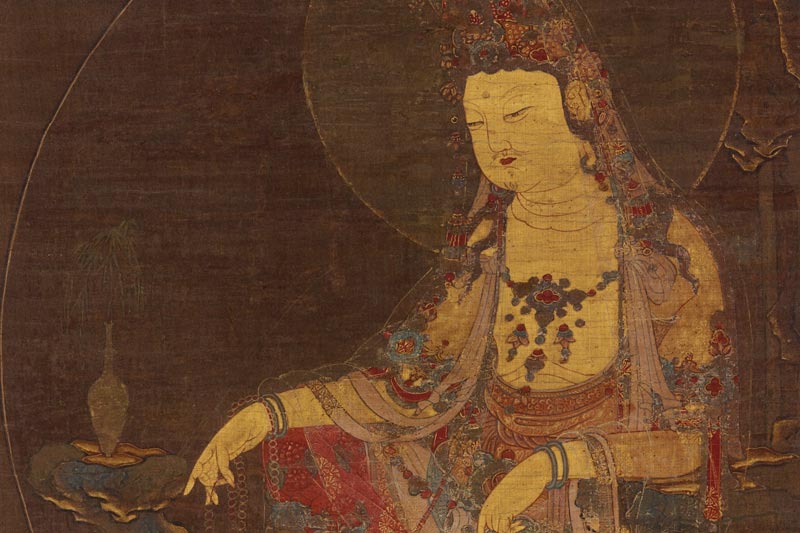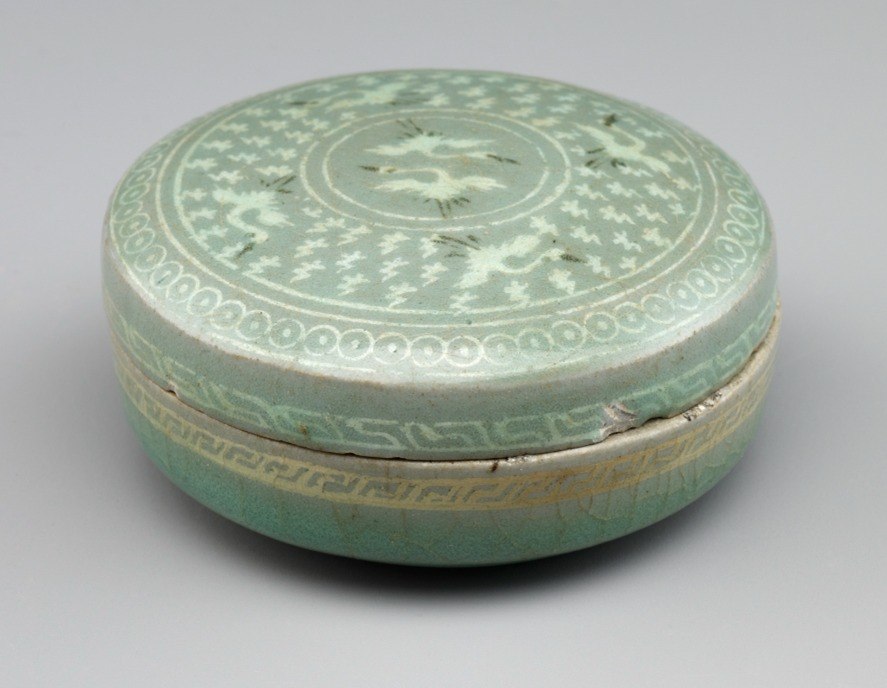Chuseok - National Museum of Asian Art (original) (raw)
The Korean festival of Chuseok (literally, “autumn evening”) is celebrated in the eighth month of the lunar calendar when the moon is at its fullest. Associated with the harvest, the festival is a time for families to gather and give thanks to their ancestors. The origins of Chuseok can be traced back to the ancient Silla kingdom some two thousand years ago. Together with Lunar New Year, it is one of the most important holidays in Korea and is marked by many traditions.
On the morning of Chuseok, families honor their ancestors with memorial services called charye and visit the graves of loved ones. During these ceremonies, families offer food and wine made with fresh fruits and newly harvested crops. The most characteristic dish of the day is songpyeon, a rice cake shaped like a half-moon and stuffed with fillings, such as sweetened sesame seeds, mung beans, or red bean paste. In the evening, everyone makes wishes on the full moon at its brightest.
Also known as the Mid-Autumn Moon Festival, the holiday is widely celebrated throughout East and Southeast Asia. Celebrants in each country observe the holiday with their own unique traditions.

Celebrate Chuseok at NMAA
September 2024
Celebrate Chuseok with Korean cultural events all throughout September. Get the fall festivities going with a book talk or virtual tours of our Korean collections. It all leads up to our Chuseok family festival on September 21, a day of music, food, crafts, and traditions.

Virtual Tour | Arts of Korea
September 5 and September 19
Admire Korean art in this online tour of the National Museum of Asian Art's collections. Get a close look at one thousand years of Korean art through masterpieces of the time. This tour highlights celadon—one of the world’s most treasured and admired ceramics. Museum docents will guide you through Korean imagery, techniques of Korean art, and stories of how the museum acquired these works.
Register for a Scheduled Tour
Can’t make either date?
You can request a free virtual tour of our Korean collection for your group of ten or more adults.
For Educators
Search millions of resources across the Smithsonian to create and share personalized collections in the Smithsonian Learning Lab. Learn about Korean art at NMAA by exploring these collections designed by educators.
Learn more about Korean Art and Culture
Immerse yourself in Korean art and culture through videos, audio recordings, written sources, and more.
Online Catalogue | Goryeo Buddhist Painting: A Closer Look
International collaboration and modern research techniques reveal characteristic details in thirteenth- and fourteenth-century Korean Buddhist paintings that distinguish them from similar works painted elsewhere in Asia.

Online Catalogue | Korean Ceramics in the Freer Gallery of Art
NMAA’s Freer Gallery of Art collections include almost three hundred Korean ceramics spanning the Three Kingdoms (57 BCE–676 CE), Unified Silla (676–935), Goryeo (918–1392), and Joseon (1392–1910) periods. This online catalogue presents all of those works and provides information about their dating, place of production, and provenance.

Korean Art Exhibitions
Experience the Korean art exhibitions that are currently on view, or browse our exhibition archive.
Park Chan-kyong: Gathering
October 7, 2023–October 14, 2024
Seoul-based artist Park Chan-kyong has gained international recognition for his use of photography and film to examine the complex history of modern Korea. Park Chan-kyong: Gathering is the first solo presentation of his work in a major United States museum. The exhibition features a range of works that highlight his masterful use of the photographic medium to explore the enduring traces of tradition, history, and disaster in contemporary society.
View Exhibition
Do Ho Suh: Public Figures
April 27, 2024–April 29, 2029
As an artist living and working between his familial roots in South Korea and professional life in the United States and Europe, Suh explores how objects can make tangible the power of place and memory and the tension between individual and community identity. For Public Figures, Suh created a plinth for a monument. However, the imposing form is not a base to honor an individual or to mark a particular historic event, but rather a massive weight held aloft by many small figures in mid-stride. Placed among some of the United States’ most important national institutions, the sculpture prompts viewers to consider the notion of heroic individualism and the stability of national narratives.
View Exhibition
Rediscovering Korea’s Past
Ongoing
Today we admire the translucent gray-green celadon glaze on Korean ceramics of the Goryeo period (918–1392) as one of the great achievements of world potters. It is startling to realize that once this ware was all but forgotten. A millennium ago in Korea, tastes changed. Other styles of ceramics replaced celadon in temples, palaces, and homes of the elite.
View Exhibition
Korean Art in the Collections
Highlights of the museum’s Korean art collection include Joseon period (1392–1910) teabowls, Goryeo dynasty (918–1392) celadons, and Buddhist paintings.



